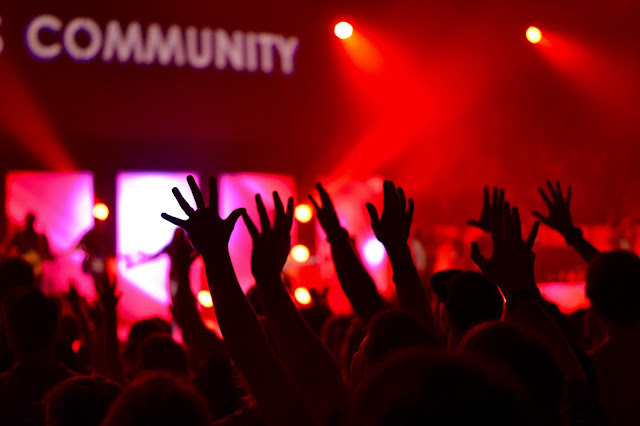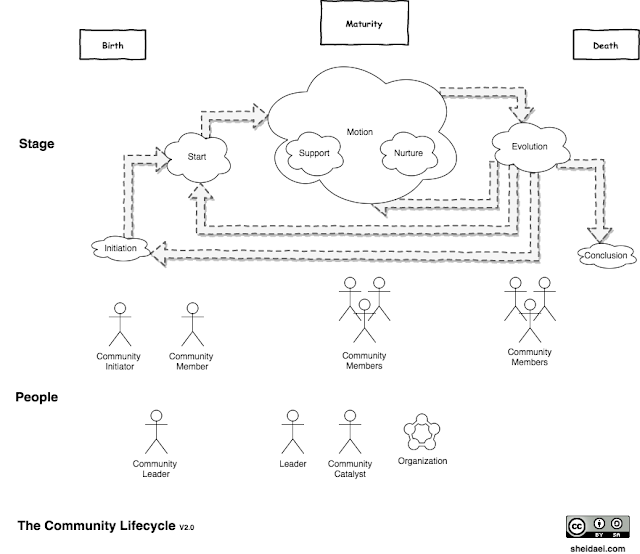You are in the business of Change1. You are influencing the change of people’s behavior and/or processes2. You have many tools in your toolbelt to introduce change, make people aware of the change, help them through change, let them experiment with change, and even empower them to be the change themselves.
You are knowledgeable about different strategies including but not limited to McKinsey, Kotter, ADKAR, Deming and even Lean change Model. In some circumstances, they worked really well, and in some, they didn’t bear the result you intended. I don’t want to debate on which is better than the other or give you hints on when to use which3. However, I want to introduce you to a concept that can greatly improve your ability to influence, drive and make change happen. It’s the one and only Community!
Let me ask you a question. How many times have you considered yourself part of a community? How many times have you felt the need for a community? I bet there were even times you were part of a community and didn’t realize it until some time.
 |
| Picture 1 – A Happy Community |
As humans, throughout the history, we relied and continue to rely on communities for many reasons. It might have been because of satisfying our basic needs, helping each other, built around an interest, or even virtual communities. No matter what format and shape a community take, it is a very powerful social tool to rely on.
So why are we not relying on them even more? What is holding us back thinking and relying on them a lot more when it comes to the change space? Why communities are not our go-to solutions?
You might think there might be consequences. There isn’t! There is no real harm in building and flourishing communities. A community will self-correct (evolve) itself or even die out naturally if the need is satisfied. You don’t need to worry about it a bit. You just need to let go. It is not hard to build a community. It only takes someone to initiate it (i.e. a community initiator) and someone to follow that person (i.e. community member) around a similar need, which they want to be satisfied. For such a cheap investment, why are we not building them more often? You might think a successful community is a community with lots of people involved. I wouldn’t agree with that. A successful community is a community. Communities are successful if we (i.e. people in & around the communities) don’t tamper with their lifecycle.
We need to build communities more and more often than ever. What I would like to propose to you is a challenge. Whatever change you are working about in your role, I want you to think of a community-based solution as your go-to solution. I want you to think of solutions that have communities built-in into them. It might not be easy to initiate a community, start it, support and nurture it, and even let it evolve. That’s why it’s a challenge. For doing so, let me introduce you to the definition and lifecycle of a community.
Definition of community below is the one that I like to use.4
The figure below illustrates the lifecycle of the community.
 |
| Figure 1 – The Community Lifecycle |
I do not want to go into all details of this illustration. I just want to talk about the most important point in the lifecycle of a community, the Evolution. As you can see, there are many directions that a community can take from the Evolution stage. And that’s the main challenge working with communities. As a person with an interest in a community, you would want to shape the community in a way to have the shortest loop possible after the Evolution phase. You would want the community to be in the loop of “Motion-Evolution”, rather than “Evolution-Start”, and rather than “Evolution-Initiation”.
The challenge here is not really how to start or build a community. The main challenge is when the community is in Motion, how to understand its needs, how to support it, and how to nurture it. How can you make the shorter loop exist? The shorter the loop, the less community member you lose, the more momentum you have and more people’s needs are being satisfied.
Communities are very fragile. They need the correct type of support5. Many people, in and out of the community, can affect the community in positive and negative ways. It doesn’t take that much to see a community fade away. Without the right structure in place that let the community to go through its natural lifecycle, you won’t be having a community at all. You might have a group that you are calling it a community.
I would love to hear your thoughts on communities. Even better, if you give it a try to build one and what you learned from it. At last, we are all part of the community that helps each other learn more about communities.
1– You are even if you don’t believe that. The only constant is the change in the world we live in, and you are a part of it!
2– You might direct a change, focus on the process v.s. people or many other approaches you might take to introduce change.
3– Even if I want to, I don’t consider myself qualified and knowledgeable enough to do so.
4– Part of Community-Driven Change talk, as presented with my colleague Shawn Button at AgileDC 2017.
5– The best type of support which as a person you can provide for a community is to take part in it, or even better coach people of the community and facilitate sessions for the community.